Indian Cartoons Taught Us More Than School You Just Didn’t Realize It
Ankita Rai | Thu, 05 Jun 2025
Indian cartoons like Chhota Bheem, Ramayan, Tenali Raman, and Shaktimaan subtly taught children life lessons that traditional schooling often missed. Far beyond entertainment, these shows instilled values like courage, empathy, intelligence, and cultural pride through relatable storytelling and emotional depth. They introduced concepts of dharma, friendship, emotional resilience, and ethical behavior in ways textbooks rarely could. By blending fun with philosophy, Indian cartoons became early moral guides, shaping mindsets and character—often without conscious realization. A nostalgic reflection on how animation, not academics, sparked some of the most lasting lessons in childhood.
Photo:
If you believed cartoons were merely a means of keeping us entertained while parents had some respite, you might want to reconsider. For countless Indian children, animated cartoon characters weren't just entertaining—they were teachers in disguise. Before learning about terms such as morality, culture, or resilience from our schoolbooks, we got to witness these values in action, brought to life in 2D animation, with catchy tunes and uncomplicated plotlines. From Chhota Bheem to Ramayan, these programs provided more than mirththey taught lifelong lessons. We might have laughed at how simplistic they were in those days, but most of us today owe our earliest notion of right and wrong, cooperation, and identity to these cartoons.
Chhota Bheem: The Everyday Hero's Handbook
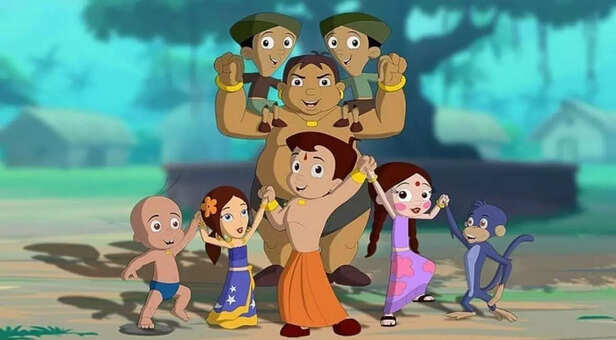
Set in the fictional town of Dholakpur, Chhota Bheem may have appeared as just another kid-centric show with a muscle-flexing boy solving problems. But look closer, and you’ll see it’s an illustrated crash course in courage, empathy, and leadership. Bheem never battles for glory or fame. He battles for his friends, his town, and for what’s right. His power is complemented by humility, and he never allows it to overpower his compassion. The series gently reminds children of the need to use their abilities responsibly. In a society where physical strength is often glorified, Bheem demonstrates that moral strength is just as heroic.
Ramayan TV Series: The First Animated Dharma Class
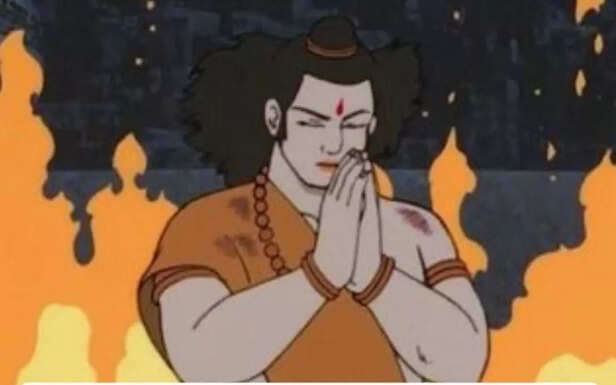
Early in the 2000s, the Ramayan animated show brought India’s greatest epic to children in a palatable form. While the wordy books or dramatized series were too complex for young minds, this version brought Rama, Sita, and Hanuman within reach of children. But the value wasn't in storytelling alone. The series planted seeds of moral contemplation obedience without submission, valor without ego, and devotion without dependency. Children observed what it meant to tread the road of dharma, not because they were told to, but because they saw the emotional and ethical implications unfold. Sita’s composure in captivity, Rama’s inner struggle in performing his duty, and Lakshman’s unshakeable loyalty weren’t just moments in a story they were frameworks of value communicated through action.
Motu Patlu, Tenali Raman, and the Humor of Intelligence
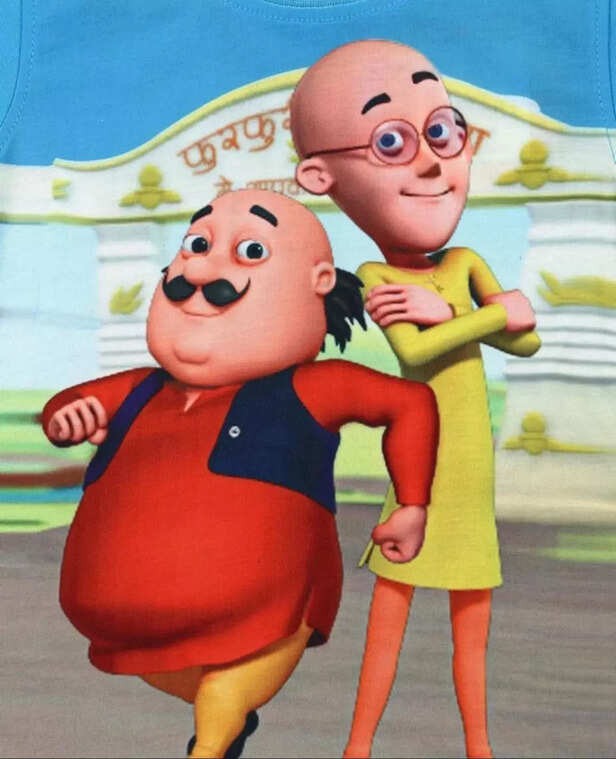
Not every Indian cartoon was intended to be a mythological epic. Motlu Patlu and Tenali Raman used humor and wit as vehicles for life lessons. While Motlu Patlu focused on friendship and lighthearted problem-solving, Tenali Raman brought back the brilliance of Indian folklore. Tenali Raman, the iconic court jester, often resolved kingdom-level issues with nothing but common sense and timing. These tales taught children that intelligence is less about memorization and more about application and flexibility—something most schoolbooks failed to convey with the same effectiveness or joy.
Shaktimaan: India’s First Superhero with a Moral Manual

Before Marvel and DC ruled Indian screens, there was Shaktimaan. Although not fully animated, the occasional cartoon-style segments and deep cultural influence secure its place in this discussion. The show wasn’t only about fighting villains it ended every episode with a direct message for children on values like honesty, discipline, and respect. In an era where moral guidance rarely came wrapped in action and style, Shaktimaan was our indigenous answer: a superhero who meditated, practiced self-control, and emphasized that true strength came from within.
Cartoons as Cultural Literacy
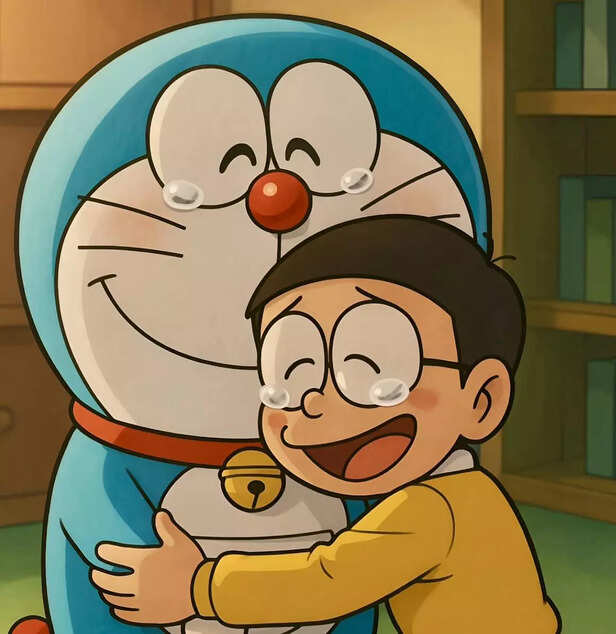
For many urban children, folk tales and traditional narratives had faded from everyday life. Indian cartoons stepped in to revive them. They reintroduced us to festivals, mythologies, clothing, and language in the most accessible way. Cartoons like Bal Ganesh and Little Krishna weren’t just animated narratives—they were cultural primers. Through them, children absorbed mantras, customs, and rituals not as obligations but as part of engaging stories. By blending culture with fun, these shows made heritage less intimidating and more interactive.
Visual Learning Over Rote Learning
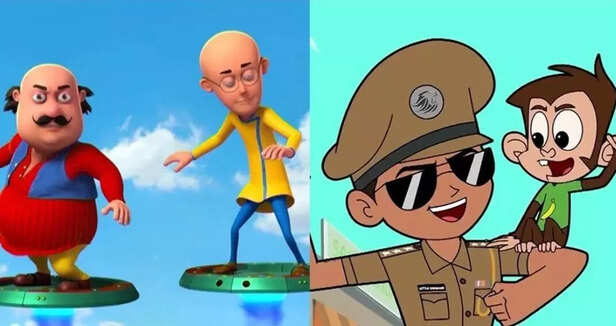
Indian schooling is heavily focused on memorization, but cartoons flipped the model—they showed rather than told. Watching Bheem help a stranger or Rama fulfill a promise had a far deeper emotional impact than any classroom lesson. Through visual repetition and emotional storytelling, values were absorbed and remembered. These animated characters were not just fictional heroes; they were metaphors for integrity, kindness, and emotional intelligence.
Arguably the most overlooked contribution of Indian cartoons is emotional learning. We saw characters wrestle with guilt, joy, fear, and jealousy—then resolve their issues through empathy, reflection, or dialogue. These weren’t labeled as emotional lessons, but they absolutely were. Shows like Doraemon (though Japanese, hugely popular in India) helped children understand failure and self-worth, while Roll No 21 mixed school drama with mythological themes, showing that internal struggles could be managed through communication and friendship.
From Passive Viewing to Personality Building
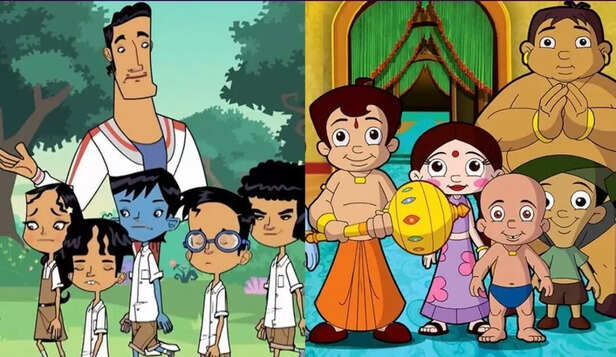
While today’s children are drawn to international content, there’s something to be said for revisiting Indian classics—not just for nostalgia, but for the values they embedded. Unlike many Western cartoons, which lean heavily on sarcasm, rebellion, or slapstick, Indian cartoons often emphasized emotional growth, ethical decision-making, and the triumph of good. They didn’t just pass the time—they built character.
Final Thoughts
We may not remember every history chapter or arithmetic formula, but we do remember Chhota Bheem’s bravery, Tenali Raman’s cleverness, and Hanuman’s loyalty. Indian cartoons weren’t just fillers between school and dinner. They were our first stories of morality, our earliest connection to culture, and some of the most consistent teachers we ever had. So the next time someone dismisses cartoons as “childish,” remember—those colorful characters helped raise us into better human beings. No exams, no pressure, no rules—just stories that stayed.
Unlock insightful tips and inspiration on personal growth, productivity, and well-being. Stay motivated and updated with the latest at My Life XP.
Chhota Bheem: The Everyday Hero's Handbook

Picture credit : Instagram
Set in the fictional town of Dholakpur, Chhota Bheem may have appeared as just another kid-centric show with a muscle-flexing boy solving problems. But look closer, and you’ll see it’s an illustrated crash course in courage, empathy, and leadership. Bheem never battles for glory or fame. He battles for his friends, his town, and for what’s right. His power is complemented by humility, and he never allows it to overpower his compassion. The series gently reminds children of the need to use their abilities responsibly. In a society where physical strength is often glorified, Bheem demonstrates that moral strength is just as heroic.
Ramayan TV Series: The First Animated Dharma Class

Picture credit : Instagram
Early in the 2000s, the Ramayan animated show brought India’s greatest epic to children in a palatable form. While the wordy books or dramatized series were too complex for young minds, this version brought Rama, Sita, and Hanuman within reach of children. But the value wasn't in storytelling alone. The series planted seeds of moral contemplation obedience without submission, valor without ego, and devotion without dependency. Children observed what it meant to tread the road of dharma, not because they were told to, but because they saw the emotional and ethical implications unfold. Sita’s composure in captivity, Rama’s inner struggle in performing his duty, and Lakshman’s unshakeable loyalty weren’t just moments in a story they were frameworks of value communicated through action.
Motu Patlu, Tenali Raman, and the Humor of Intelligence

Picture credit : Instagram
Not every Indian cartoon was intended to be a mythological epic. Motlu Patlu and Tenali Raman used humor and wit as vehicles for life lessons. While Motlu Patlu focused on friendship and lighthearted problem-solving, Tenali Raman brought back the brilliance of Indian folklore. Tenali Raman, the iconic court jester, often resolved kingdom-level issues with nothing but common sense and timing. These tales taught children that intelligence is less about memorization and more about application and flexibility—something most schoolbooks failed to convey with the same effectiveness or joy.
Shaktimaan: India’s First Superhero with a Moral Manual

Picture credit : Instagram
Before Marvel and DC ruled Indian screens, there was Shaktimaan. Although not fully animated, the occasional cartoon-style segments and deep cultural influence secure its place in this discussion. The show wasn’t only about fighting villains it ended every episode with a direct message for children on values like honesty, discipline, and respect. In an era where moral guidance rarely came wrapped in action and style, Shaktimaan was our indigenous answer: a superhero who meditated, practiced self-control, and emphasized that true strength came from within.
Cartoons as Cultural Literacy

Picture credit : Instagram
For many urban children, folk tales and traditional narratives had faded from everyday life. Indian cartoons stepped in to revive them. They reintroduced us to festivals, mythologies, clothing, and language in the most accessible way. Cartoons like Bal Ganesh and Little Krishna weren’t just animated narratives—they were cultural primers. Through them, children absorbed mantras, customs, and rituals not as obligations but as part of engaging stories. By blending culture with fun, these shows made heritage less intimidating and more interactive.
Visual Learning Over Rote Learning

Picture credit : Instagram
Indian schooling is heavily focused on memorization, but cartoons flipped the model—they showed rather than told. Watching Bheem help a stranger or Rama fulfill a promise had a far deeper emotional impact than any classroom lesson. Through visual repetition and emotional storytelling, values were absorbed and remembered. These animated characters were not just fictional heroes; they were metaphors for integrity, kindness, and emotional intelligence.
Not Just Timepass: Emotional Literacy in Cartoons
Arguably the most overlooked contribution of Indian cartoons is emotional learning. We saw characters wrestle with guilt, joy, fear, and jealousy—then resolve their issues through empathy, reflection, or dialogue. These weren’t labeled as emotional lessons, but they absolutely were. Shows like Doraemon (though Japanese, hugely popular in India) helped children understand failure and self-worth, while Roll No 21 mixed school drama with mythological themes, showing that internal struggles could be managed through communication and friendship.
From Passive Viewing to Personality Building

Picture credit : Instagram
While today’s children are drawn to international content, there’s something to be said for revisiting Indian classics—not just for nostalgia, but for the values they embedded. Unlike many Western cartoons, which lean heavily on sarcasm, rebellion, or slapstick, Indian cartoons often emphasized emotional growth, ethical decision-making, and the triumph of good. They didn’t just pass the time—they built character.
Final Thoughts
We may not remember every history chapter or arithmetic formula, but we do remember Chhota Bheem’s bravery, Tenali Raman’s cleverness, and Hanuman’s loyalty. Indian cartoons weren’t just fillers between school and dinner. They were our first stories of morality, our earliest connection to culture, and some of the most consistent teachers we ever had. So the next time someone dismisses cartoons as “childish,” remember—those colorful characters helped raise us into better human beings. No exams, no pressure, no rules—just stories that stayed.
Unlock insightful tips and inspiration on personal growth, productivity, and well-being. Stay motivated and updated with the latest at My Life XP.
Frequently Asked Questions (FAQs)
- What values did Indian cartoons teach children?They taught values like empathy, courage, intelligence, and respect for culture through engaging stories.
- How were Indian cartoons different from school education?Cartoons used visual storytelling and emotion to teach morals, while schools often relied on rote learning.
- Why do Indian cartoons still resonate with adults today?Because their life lessons were simple, relatable, and deeply rooted in timeless cultural and moral themes.










